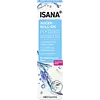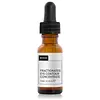What's inside
What's inside
 Key Ingredients
Key Ingredients

 Benefits
Benefits

 Concerns
Concerns

 Ingredients Side-by-side
Ingredients Side-by-side

Water
Skin ConditioningGlycerin
HumectantButylene Glycol
HumectantSorbitol
HumectantBetaine
HumectantBeta Vulgaris Root Extract
Skin ConditioningFructooligosaccharides
HumectantAloe Barbadensis Leaf Juice
Skin ConditioningSodium Hyaluronate
HumectantPanthenol
Skin ConditioningCaffeine
Skin ConditioningEscin
TonicLactic Acid
BufferingRuscus Aculeatus Root Extract
AstringentBiosaccharide Gum-1
HumectantCentella Asiatica Leaf Extract
Skin ConditioningHydrolyzed Yeast Protein
Skin ConditioningCalendula Officinalis Flower Extract
MaskingPhenoxyethanol
PreservativeXanthan Gum
EmulsifyingPotassium Lactate
BufferingEthylhexylglycerin
Skin ConditioningSodium Hydroxide
BufferingAmmonium Glycyrrhizate
MaskingSodium Citrate
BufferingWater, Glycerin, Butylene Glycol, Sorbitol, Betaine, Beta Vulgaris Root Extract, Fructooligosaccharides, Aloe Barbadensis Leaf Juice, Sodium Hyaluronate, Panthenol, Caffeine, Escin, Lactic Acid, Ruscus Aculeatus Root Extract, Biosaccharide Gum-1, Centella Asiatica Leaf Extract, Hydrolyzed Yeast Protein, Calendula Officinalis Flower Extract, Phenoxyethanol, Xanthan Gum, Potassium Lactate, Ethylhexylglycerin, Sodium Hydroxide, Ammonium Glycyrrhizate, Sodium Citrate
Water
Skin ConditioningGlycerin
HumectantButylene Glycol
HumectantPropanediol
SolventHydrolyzed Yeast Extract
Skin ConditioningAlbizia Julibrissin Bark Extract
MaskingNiacinamide
SmoothingDipeptide Diaminobutyroyl Benzylamide Diacetate
Skin ConditioningPalmitoyl Tripeptide-38
Skin ConditioningAcetyl Hexapeptide-8
HumectantAcetyl Tetrapeptide-5
HumectantDecapeptide-22
Skin ConditioningOligopeptide-78
Skin ConditioningPalmitoyl Decapeptide-21
Skin ConditioningPalmitoyl Hexapeptide-52
Skin ConditioningZinc Palmitoyl Nonapeptide-14
Skin ConditioningPalmitoyl Tetrapeptide-50
Skin ConditioningPentapeptide-18
Skin ConditioningAcetyl Hexapeptide-30
Skin ConditioningHeptapeptide-15 Palmitate
Skin ConditioningPalmitoyl Heptapeptide-18
Skin ConditioningS-Mu-Conotoxin Cniiic Acetate
Skin ConditioningSodium Hyaluronate
HumectantDarutoside
Skin ConditioningEpigallocatechin Gallatyl Glucoside
AntioxidantGallyl Glucoside
AntioxidantAscorbyl Glucoside
AntioxidantZinc PCA
HumectantMethylglucoside Phosphate
Skin ConditioningDisodium Acetyl Glucosamine Phosphate
Skin ConditioningCopper Lysinate/Prolinate
Skin ConditioningHydroxypropyl Cyclodextrin
MaskingSuperoxide Dismutase
AntioxidantEscin
TonicAscorbic Acid
AntioxidantAmmonium Glycyrrhizate
MaskingPolyglucuronic Acid
Skin ConditioningAscophyllum Nodosum Extract
Skin ConditioningAsparagopsis Armata Extract
Skin ProtectingFraxinus Excelsior Bark Extract
Skin ConditioningOlea Europaea Leaf Extract
PerfumingPolypodium Vulgare Rhizome Extract
HumectantCetraria Islandica Thallus Extract
HumectantSphagnum Magellanicum Extract
Skin ConditioningRuscus Aculeatus Root Extract
AstringentCentella Asiatica Extract
CleansingCalendula Officinalis Flower Extract
MaskingArginine
MaskingPanthenol
Skin ConditioningHydrolyzed Rice Protein
Skin ConditioningGlycine Soja Protein
EmulsifyingHydrolyzed Wheat Protein
Skin ConditioningHydrolyzed Yeast Protein
Skin ConditioningLecithin
EmollientPolyacrylate Crosspolymer-6
Emulsion StabilisingXanthan Gum
EmulsifyingCetyl Hydroxyethylcellulose
Emulsion StabilisingSilanetriol
Sodium Dextran Sulfate
Gel FormingSorbitol
HumectantPentylene Glycol
Skin ConditioningDimethyl Isosorbide
SolventCitric Acid
BufferingGlycolic Acid
BufferingLactic Acid
BufferingLactic Acid/Glycolic Acid Copolymer
Skin ConditioningPPG-26-Buteth-26
Skin ConditioningPolyvinyl Alcohol
PEG-40 Hydrogenated Castor Oil
EmulsifyingPropyl Gallate
AntioxidantPotassium Sorbate
PreservativeCaprylyl Glycol
EmollientGlyceryl Caprylate
EmollientEthylhexylglycerin
Skin ConditioningSodium Benzoate
MaskingBenzyl Alcohol
PerfumingPhenylpropanol
MaskingDehydroacetic Acid
PreservativePhenoxyethanol
PreservativeChlorphenesin
AntimicrobialWater, Glycerin, Butylene Glycol, Propanediol, Hydrolyzed Yeast Extract, Albizia Julibrissin Bark Extract, Niacinamide, Dipeptide Diaminobutyroyl Benzylamide Diacetate, Palmitoyl Tripeptide-38, Acetyl Hexapeptide-8, Acetyl Tetrapeptide-5, Decapeptide-22, Oligopeptide-78, Palmitoyl Decapeptide-21, Palmitoyl Hexapeptide-52, Zinc Palmitoyl Nonapeptide-14, Palmitoyl Tetrapeptide-50, Pentapeptide-18, Acetyl Hexapeptide-30, Heptapeptide-15 Palmitate, Palmitoyl Heptapeptide-18, S-Mu-Conotoxin Cniiic Acetate, Sodium Hyaluronate, Darutoside, Epigallocatechin Gallatyl Glucoside, Gallyl Glucoside, Ascorbyl Glucoside, Zinc PCA, Methylglucoside Phosphate, Disodium Acetyl Glucosamine Phosphate, Copper Lysinate/Prolinate, Hydroxypropyl Cyclodextrin, Superoxide Dismutase, Escin, Ascorbic Acid, Ammonium Glycyrrhizate, Polyglucuronic Acid, Ascophyllum Nodosum Extract, Asparagopsis Armata Extract, Fraxinus Excelsior Bark Extract, Olea Europaea Leaf Extract, Polypodium Vulgare Rhizome Extract, Cetraria Islandica Thallus Extract, Sphagnum Magellanicum Extract, Ruscus Aculeatus Root Extract, Centella Asiatica Extract, Calendula Officinalis Flower Extract, Arginine, Panthenol, Hydrolyzed Rice Protein, Glycine Soja Protein, Hydrolyzed Wheat Protein, Hydrolyzed Yeast Protein, Lecithin, Polyacrylate Crosspolymer-6, Xanthan Gum, Cetyl Hydroxyethylcellulose, Silanetriol, Sodium Dextran Sulfate, Sorbitol, Pentylene Glycol, Dimethyl Isosorbide, Citric Acid, Glycolic Acid, Lactic Acid, Lactic Acid/Glycolic Acid Copolymer, PPG-26-Buteth-26, Polyvinyl Alcohol, PEG-40 Hydrogenated Castor Oil, Propyl Gallate, Potassium Sorbate, Caprylyl Glycol, Glyceryl Caprylate, Ethylhexylglycerin, Sodium Benzoate, Benzyl Alcohol, Phenylpropanol, Dehydroacetic Acid, Phenoxyethanol, Chlorphenesin
 Reviews
Reviews

Ingredients Explained
These ingredients are found in both products.
Ingredients higher up in an ingredient list are typically present in a larger amount.
We don't have a description for Ammonium Glycyrrhizate yet.
Butylene Glycol (or BG) is used within cosmetic products for a few different reasons:
Overall, Butylene Glycol is a safe and well-rounded ingredient that works well with other ingredients.
Though this ingredient works well with most skin types, some people with sensitive skin may experience a reaction such as allergic rashes, closed comedones, or itchiness.
Learn more about Butylene GlycolCalendula Officinalis Flower Extract comes from the common Marigold plant. This ingredient is a skin conditioner.
Marigolds contain flavonoids. Flavonoids are a group of substances found naturally in plants. They possess antioxidant and inflammation properties.
This ingredient soothes skin inflammation by inhibiting inhibiting a part of the inflammation process.
Marigolds have been used in traditional medicine throughout Asia and Europe.
Learn more about Calendula Officinalis Flower ExtractWe don't have a description for Escin yet.
Ethylhexylglycerin (we can't pronounce this either) is commonly used as a preservative and skin softener. It is derived from glyceryl.
You might see Ethylhexylglycerin often paired with other preservatives such as phenoxyethanol. Ethylhexylglycerin has been found to increase the effectiveness of these other preservatives.
Glycerin is already naturally found in your skin. It helps moisturize and protect your skin.
A study from 2016 found glycerin to be more effective as a humectant than AHAs and hyaluronic acid.
As a humectant, it helps the skin stay hydrated by pulling moisture to your skin. The low molecular weight of glycerin allows it to pull moisture into the deeper layers of your skin.
Hydrated skin improves your skin barrier; Your skin barrier helps protect against irritants and bacteria.
Glycerin has also been found to have antimicrobial and antiviral properties. Due to these properties, glycerin is often used in wound and burn treatments.
In cosmetics, glycerin is usually derived from plants such as soybean or palm. However, it can also be sourced from animals, such as tallow or animal fat.
This ingredient is organic, colorless, odorless, and non-toxic.
Glycerin is the name for this ingredient in American English. British English uses Glycerol/Glycerine.
Learn more about GlycerinWe don't have a description for Hydrolyzed Yeast Protein yet.
Lactic Acid is another well-loved alpha hydroxy acid (AHA). It is gentler than glycolic acid but still highly effective.
Its main role is to exfoliate the surface of the skin by loosening the “glue” that holds dead skin cells together. Shedding those old cells leads to smoother, softer, and more even-toned skin.
Because lactic acid molecules are larger than glycolic acid, they don’t penetrate as deeply. This means they’re less likely to sting or irritate, making it a great choice for beginners or those with sensitive skin.
Like glycolic acid, it can:
Lactic acid also acts as a humectant (like hyaluronic acid). It can draw water into the skin to improve hydration and also plays a role in the skin's natural moisturizing factor (NMF) in the form of sodium lactate.
Studies show it can boost ceramide production to strengthen the skin barrier and even help balance the skin’s microbiome.
To get results, choose products with a pH between 3-4.
Lower strengths (5-12%) focus on surface exfoliation; higher strengths (12% and up) can reach deeper in the dermis (deeper, supportive layer) to improve skin texture and firmness over time.
Though it was originally derived from milk, most modern lactic acid used in skincare is vegan. It is made through non-dairy fermentation to create a bio-identical and stable form suitable for all formulations.
When lactic acid shows up near the end of an ingredient list, it usually means the brand added just a tiny amount to adjust the product’s pH.
Legend has it that Cleopatra used to bathe in sour milk to help reduce wrinkles.
Lactic acid is truly a gentle multitasker: it exfoliates, hydrates, strengthens, and brightens. It's a great ingredient for giving your skin a smooth, glowing, and healthy look without the harshness of stronger acids.
Read more about some other popular AHA's here:
Learn more about Lactic AcidPanthenol is a common ingredient that helps hydrate and soothe the skin. It is found naturally in our skin and hair.
There are two forms of panthenol: D and L.
D-panthenol is also known as dexpanthenol. Most cosmetics use dexpanthenol or a mixture of D and L-panthenol.
Panthenol is famous due to its ability to go deeper into the skin's layers. Using this ingredient has numerous pros (and no cons):
Like hyaluronic acid, panthenol is a humectant. Humectants are able to bind and hold large amounts of water to keep skin hydrated.
This ingredient works well for wound healing. It works by increasing tissue in the wound and helps close open wounds.
Once oxidized, panthenol converts to pantothenic acid. Panthothenic acid is found in all living cells.
This ingredient is also referred to as pro-vitamin B5.
Learn more about PanthenolPhenoxyethanol is a preservative that has germicide, antimicrobial, and aromatic properties. Studies show that phenoxyethanol can prevent microbial growth. By itself, it has a scent that is similar to that of a rose.
It's often used in formulations along with Caprylyl Glycol to preserve the shelf life of products.
We don't have a description for Ruscus Aculeatus Root Extract yet.
Sodium Hyaluronate is hyaluronic acid's salt form. It is commonly derived from the sodium salt of hyaluronic acid.
Like hyaluronic acid, it is great at holding water and acts as a humectant. This makes it a great skin hydrating ingredient.
Sodium Hyaluronate is naturally occurring in our bodies and is mostly found in eye fluid and joints.
These are some other common types of Hyaluronic Acid:
Learn more about Sodium HyaluronateSorbitol is a sugar alcohol. It is a hydrating and moisturizing agent created from the reduction process of glucose.
Most sorbitol is usually made from potato starch. It is also found in fruits such as apples and pears.
As a humectant, Sorbitol helps draw water to the skin. This helps keep the skin hydrated. Sorbitol also helps create a thicker texture in products. You might find sorbitol in your toothpaste and other gels.
It is a non-irritating ingredient that is great for those with dry skin.
Sorbitol is a prebiotic. It helps promote the growth of healthy bacteria on your skin. The bacteria on your skin form a microbiome. This microbiome helps protect your skin from infection and harmful bacteria.
Learn more about SorbitolWater. It's the most common cosmetic ingredient of all. You'll usually see it at the top of ingredient lists, meaning that it makes up the largest part of the product.
So why is it so popular? Water most often acts as a solvent - this means that it helps dissolve other ingredients into the formulation.
You'll also recognize water as that liquid we all need to stay alive. If you see this, drink a glass of water. Stay hydrated!
Learn more about WaterXanthan gum is used as a stabilizer and thickener within cosmetic products. It helps give products a sticky, thick feeling - preventing them from being too runny.
On the technical side of things, xanthan gum is a polysaccharide - a combination consisting of multiple sugar molecules bonded together.
Xanthan gum is a pretty common and great ingredient. It is a natural, non-toxic, non-irritating ingredient that is also commonly used in food products.
Learn more about Xanthan Gum